In the german folklore, the plant is often called “Märzenbecher” – which would literally translate as “march cup“. But meant is the plant “spring snowflake” (Leucojum vernum).
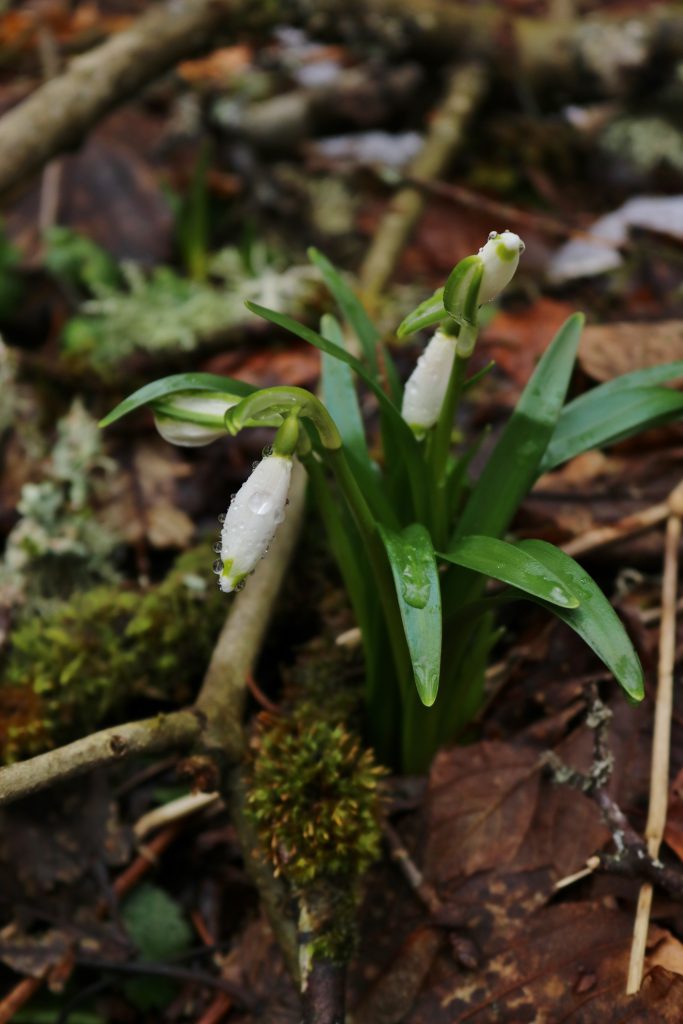
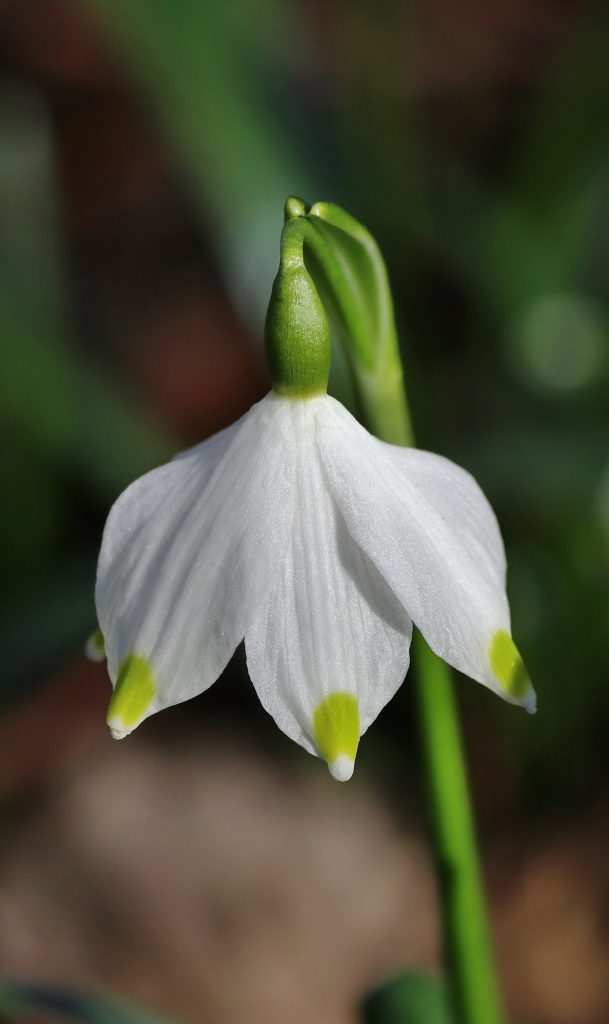

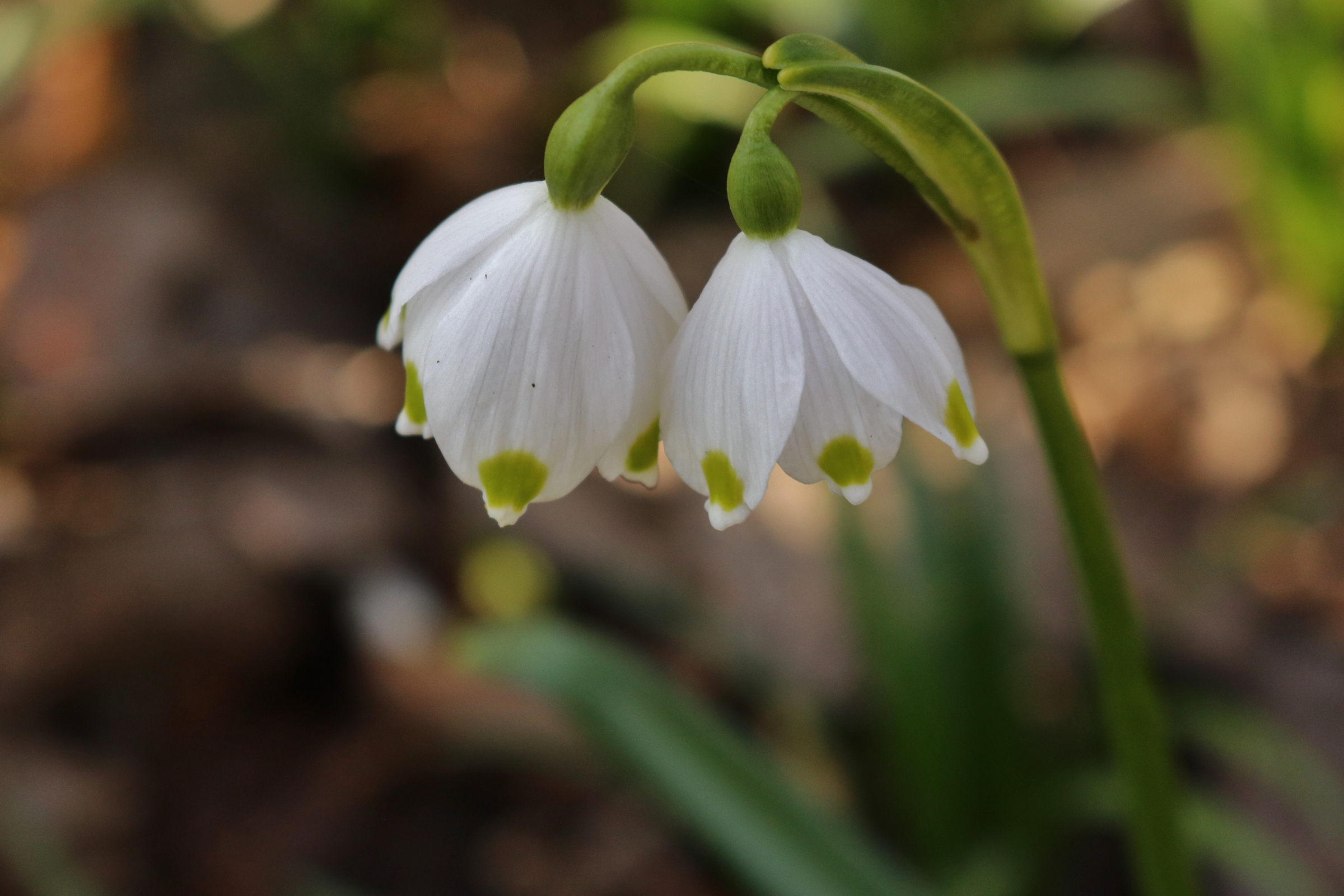
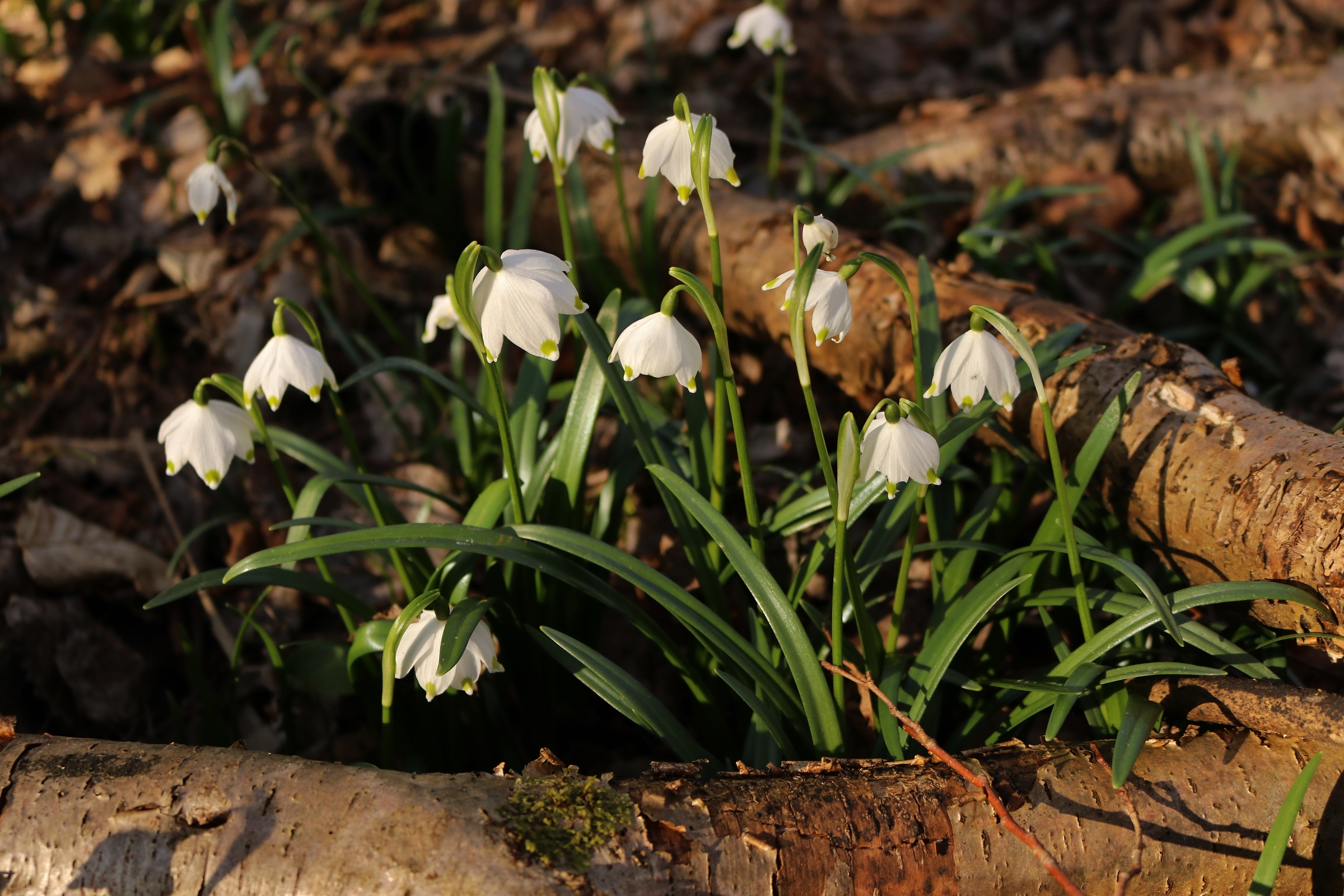
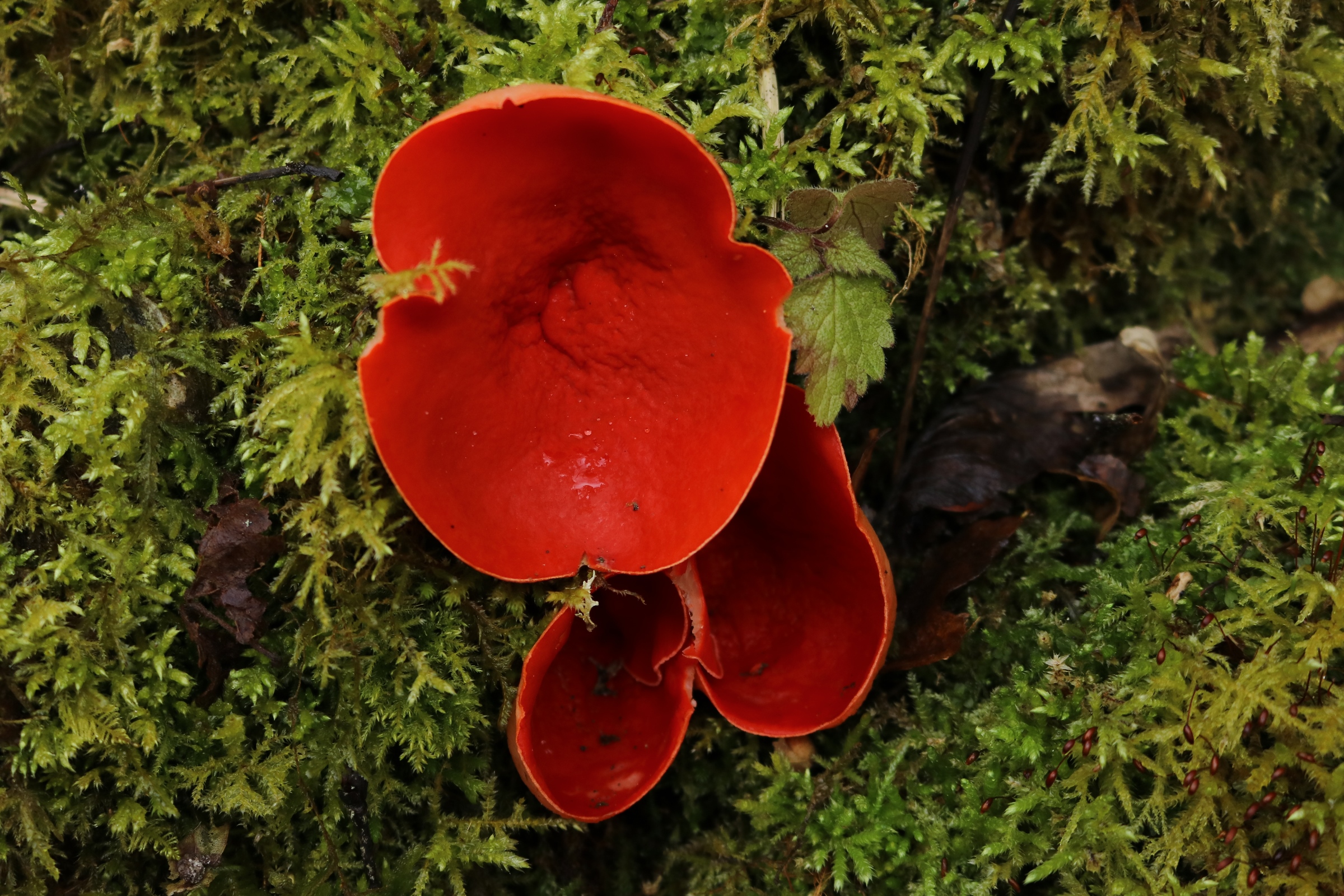
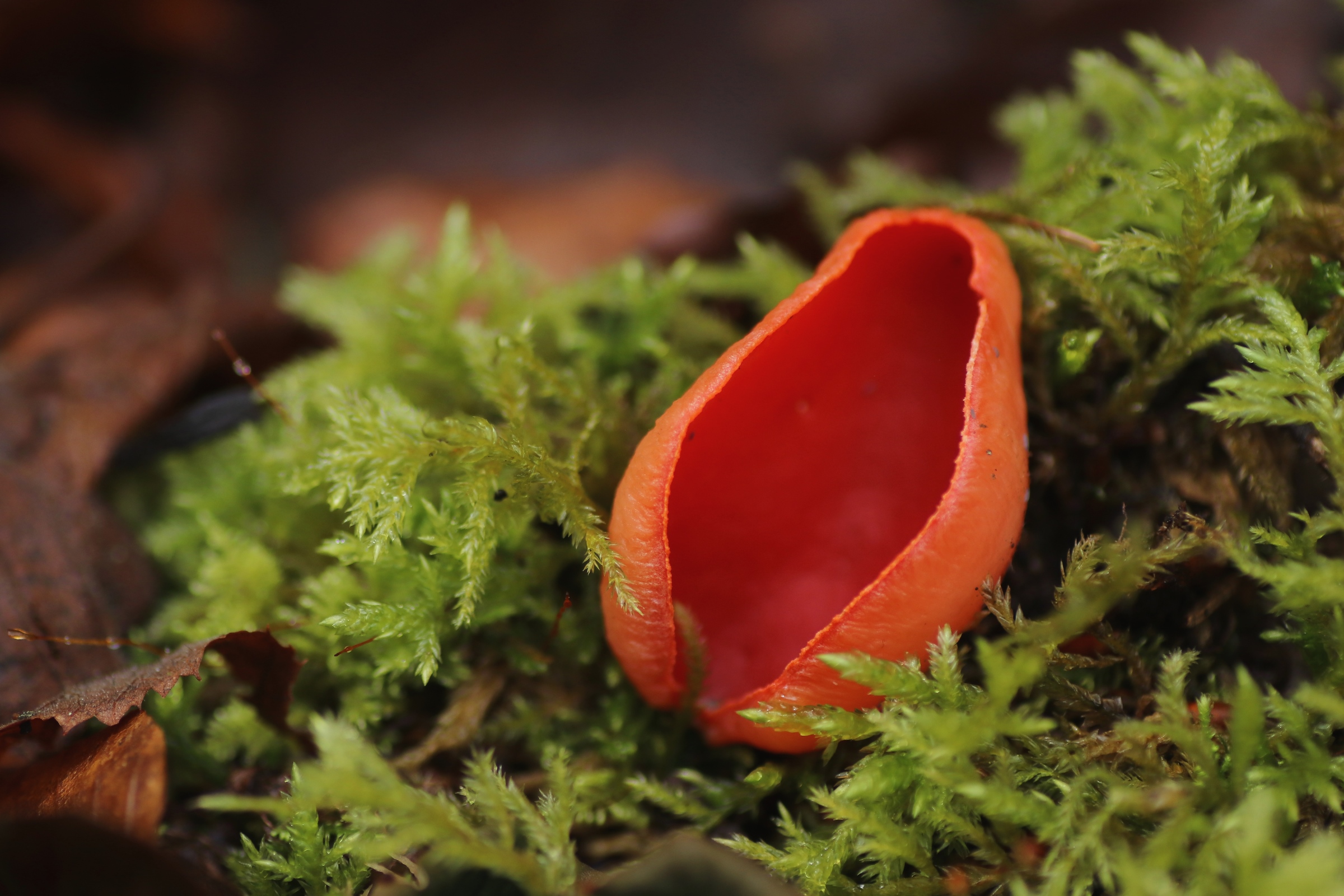
~ Poisonous plant ~
Occurrence and distribution: The spring snowflake occurs primarily in floodplain and ravine forests, meadows and on the banks of rivers. The species is also commonly found in our gardens as an decorative plant. It can be found throughout southern and central Europe.
Plant description
Growth habit: The plant can grow to a height of 10 to 30 cm. It belongs to the bulbous plants and retracts the leaves after flowering for a rest period until the next spring. The first leaves of the spring snowflake form already very early in the year. Some of them are already poking through the snow in January.
Stalks & leaves: The leaves are basal and grow in a rosette. The individual leaves have a distinct dark green colouring. They have an elongated, grass-like shape and a width of 3 to 5 cm. The flowers hang nodding on upright stalks. They form a smaller leaflet in the upper part. It has a light green colour.
Blossoms: The flowers are divided into six equally sized, tapered petals. The colour of the petals is white with the typical green tips. The golden-yellow stamens form on the inside at the base of the calyx and the ovary forms above the petals. It has a light green colour. One blossom is formed per stalk. In rare cases, however, two or more blossoms can grow from one stalk. Typically, the flowering period lasts from march to april.
Poisonous plant – tips for handling it
Toxicity: Touching the plant is not dangerous. Nevertheless, the entire plant is not edible. All parts are poisonous to humans and animals. Alkaloids such as lycorine and galantamine are formed in the plant. These are intolerable for humans and lead to poisoning.
Special characteristics
Symbiosis with fungi: Special fungi usually grow next to the spring snowflakes. These are the “scarlet cup”. They are often a rarity, as they only occur in special habitats.
Larger occurrences: Due to the special requirements of location and climate, there are only a few larger occurrences of the plant. One of these is the “Wolfstal” valley on the Swabian Alb. The plants are very strictly protected and should not be taken home! Also, the paths should not be left when visiting the valley and the plants should not be damaged under any circumstances.
Other species: If the flower spots are yellowish (see picture below), it may possibly be the Kapartian subspecies of the spring snowflake (Leucojum vernum var. carpathicum). In this species, the fused upper leaves do not protrude above the flowers.
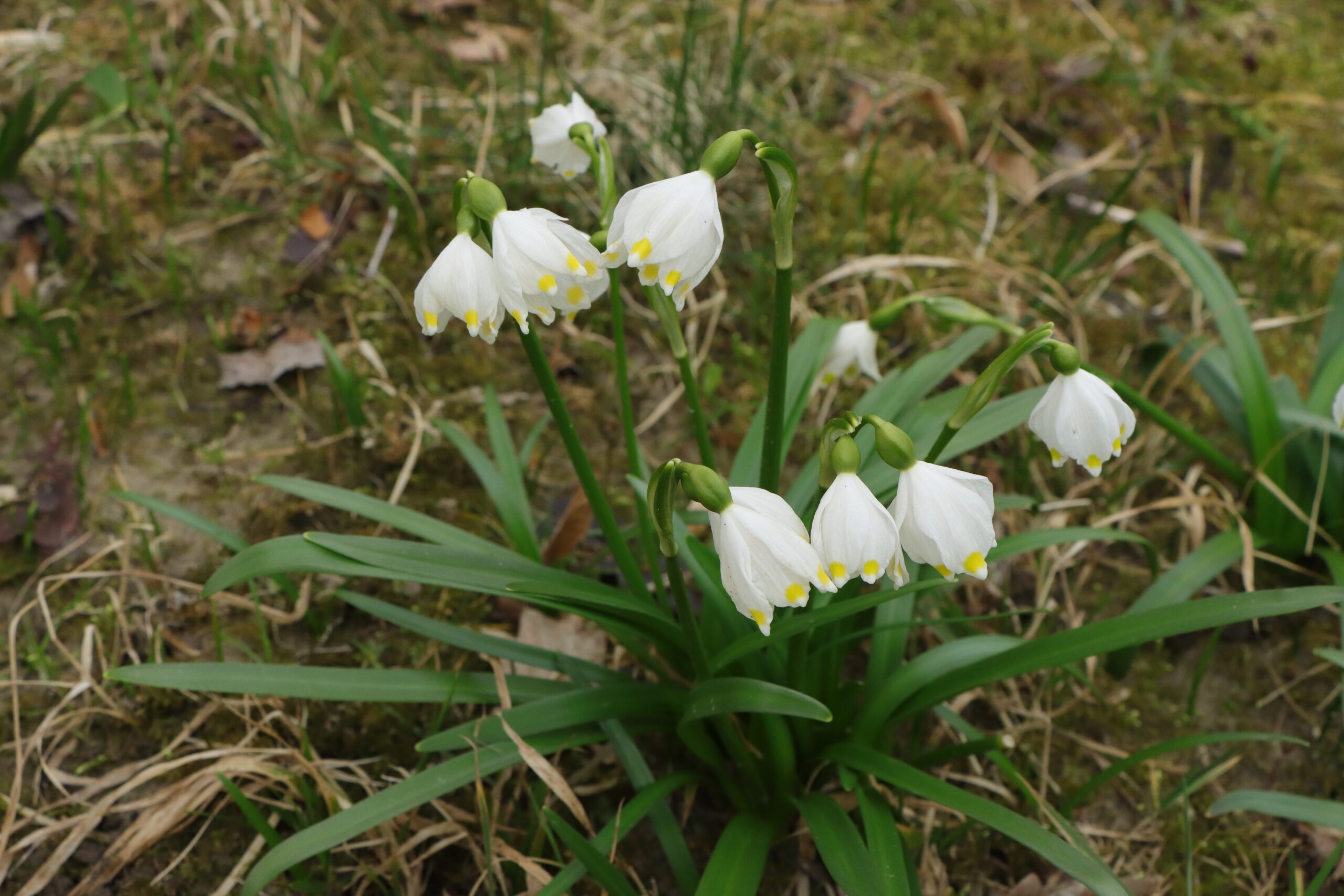
Origin of the name & traditional names
Origin of the name: The botanical genus name “Leucojum” (originally Leukoïon – but according to Dioscoride for the plant “Levkoje”) is derived from the Greek words “leukos” and “ion”. These can be translated into english as “white” and ” violet / fragrant plant”. Pre-Linnaean, other fragrant cruciferous plants such as the moon violet and the common wallflower were grouped under this name in addition to the levkoje. The second part of the Latin name “vernum” can be translated as “flowering in spring” and thus indicates the flowering time of the plant.
Traditional names: In Northern Bavaria, the spring snowdrop is called “Schneeglöckerl” (snow bell) – not to be confused with the “Schneeglöckchen” (snowdrop – Galanthus nivalis). In Northern Austria, the plant is called “Schneekaterl” (snow cat), among other names. In old books you can still find the epithets “Milchglöckchen” (milk bell), “Hornungsblume” (horned flower), “Sporkelblume” (sporkel flower) and “Sommerthürchen” (summer door). Many people also know the plant as “Märzenbecher” (March cup).
Notes on some names: The name “Sommerthürchen“ (summer door) is the name for several plants that flower in spring. According to the vernacular meaning of the name, these open the door for summer / the warmer half of the year. – Source: dwds.de
The name “Sporkelblume“ (sporkel flower) is derived from the old German word Sporkel. This can be translated into english as the month „february“. This folk name is especially widespread in Lower Saxony and on the Lower Rhine. – Source: Bavarian State Library
Endangerment of the plant
Endangerment of the plant: There are only a few places left where the spring snowflake grows naturally. It is therefore on the Red List with the endangerment level 3 and is thus classified as “endangered”! According to the german „Bundesartenschutzverordnung“ – BArtSchV – it is a specially protected species.
The individual endangerment levels are as follows,
– Germany: endangered (status: 3)
– Baden-Württemberg: endangered (status: 3)
– Bavaria: endangered (status: 3)
– Berlin: not endangered (status: *)
– Hamburg: not endangered (status: *)
– Hessen: endangered (status: 3)
– Nordrhein-Westfalen: endangered (status: 3)
– Rheinland-Pfalz: endangered (status: 3)
– Sachsen: endangered (status: 3)
– Schleswig-Holstein: not endangered (status: *)
Distribution codes: A, AV, M1, M2, F, K